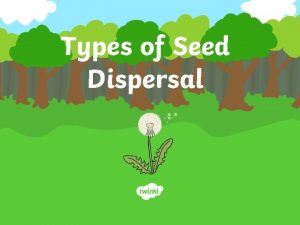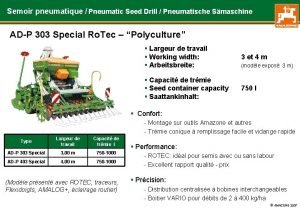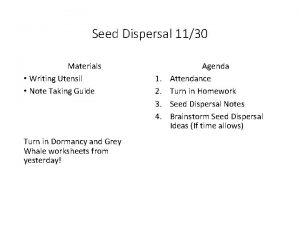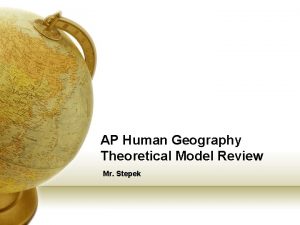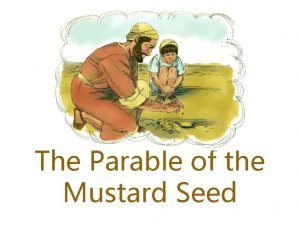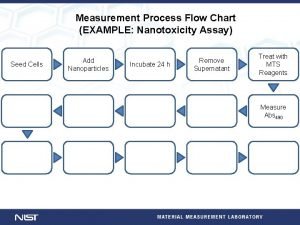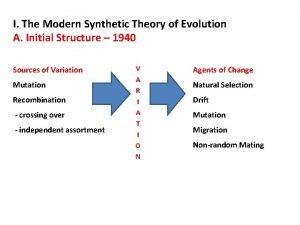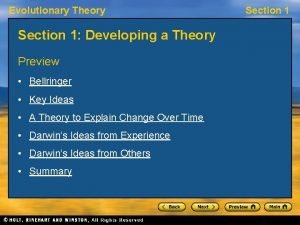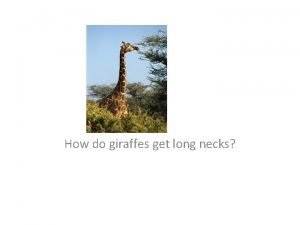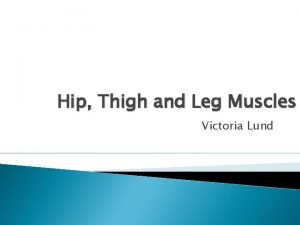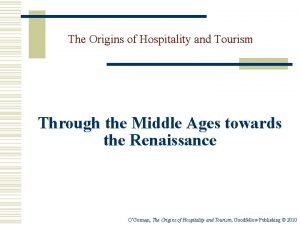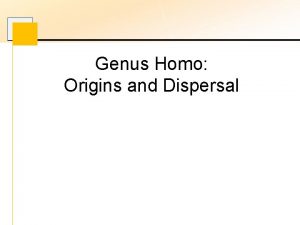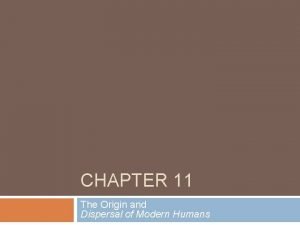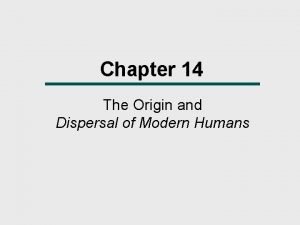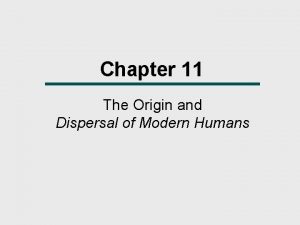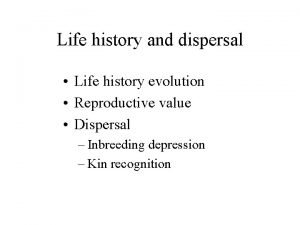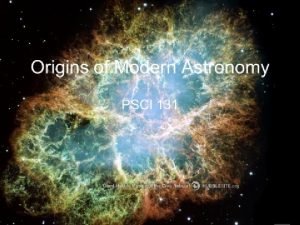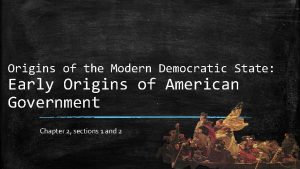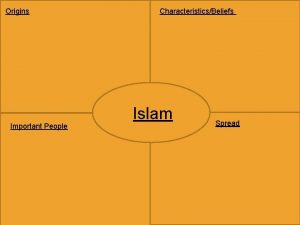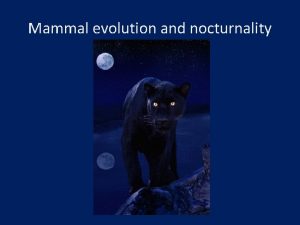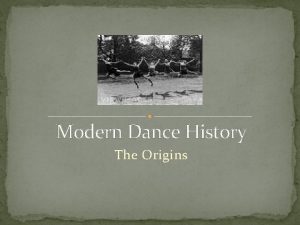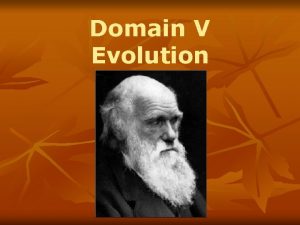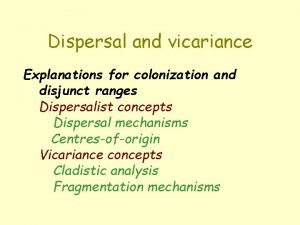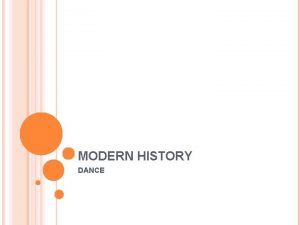The Origins Evolution and Dispersal of Modern People
































- Slides: 32

The Origins, Evolution, and Dispersal of Modern People Chapter 11

What Makes a Modern Human? • Modern refers to anatomical traits, such as • • • High, vertical forehead Round skull Small browridges Small face Small teeth Chin • Archaic (Human Ancestors) have • • Larger brow ridges Larger face and teeth Wider nose No chin

“Archaic” Homo sapiens • AKA Archaic humans: • hominins found in Africa, Europe, and Asia from 600, 000 -30, 000 years ago • They are different from Homo erectus and similar to, but not quite, Homo sapiens

“Archaic” Homo sapiens • Include: • Homo heidelbergensis • Homo neanderthalensis

The Origin of Modern Homo sapiens • There are two main hypotheses on how and where we emerged • 1. Out Of Africa/Replacement: • Humans first evolved in Africa about 200, 000 years ago • Migrated around the world and wiped out all other species • Humans are the only ones left • Humans “replaced” all other species

The Origin of Modern Homo sapiens • 2. Multiregional: • There were different regions of origins of humans • We cannot pinpoint one area • Migration and gene flow merged the different species into one final species: humans • Humans are a collection of all hominin gene pools


Evidence • Older fossils are found in Africa • (200, 000 years vs 130, 000 in Europe) • African fossils are older, showing they are the original • Using mt. DNA, we have traced our genetic background to Africa, about 200, 000 years ago • No “hybrid” species that show gene flow • Africa has more genetic diversity than the rest of the world • These all support which hypothesis?

Archaic Homo sapiens • So, Archaic Homo sapiens or Archaid humans mean our ancestors that had human trends • Large brain • Small teeth • Tool use • Cultural behaviors • Include: • H. Hedelbergensis • H. Neanderthalensis

Archaic Homo sapiens • • H. heidelbergensis Known in Europe Example is the Atapuerca skull Used front teeth as tools, so they are worn smooth • Probably from making clothing

Archaic Homo sapiens • Levallois tool technique: • Middle Paleolithic • More complex than H. erectus

Archaic Homo sapiens • First burial • Known from body found with pink handaxe • This tool was not functional, it was symbolic


Neanderthals • Migrated to Europe and Middle East • Unique anatomy: • Long, barrel-shaped skull • Occipital bun: knot on base of skull for extra neck muscle • Large nasal opening (cold environment) • Short and stocky (cold environment)


Neanderthals • Neanderthals are thought to be un-intelligent • Why? • First fossils discovered were hunched over and had large brow ridges. People though this showed the stupid, grunting “caveman. ” However, the skeleton was just an old man with arthritis • They actually have huge brains, speech, and are very intelligent


Examples • Amud Neanderthal: • Israel, 55, 000 -40, 000 ybp • Complete skeleton • Huge brain (1, 740 cc!!) • Shanidar: • Iraq, 45, 000 ybp • Broken bones and arthritis • Front teeth very worn (used as tools, probably to help make clothing) • Arm possibly amputated (see picture) • Krapina: • Croatia, 32, 000 ybp • Cut marks on bone show cannibalism

Neanderthal bodies • Walked with bent-knee • Could talk, pretty much just like us • Nasal opening helped warm the freezing air in the environment • Short, stocky body also helped trap warmth (Bergmann’s and Allen’s Rules) • Very robust and muscular • More muscular than humans • Larger brain than humans

Neanderthal Human

Neanderthal Tools and Hunting • Mousterian Tools: • Also Middle Paleolithic • Complex • Hafted tools (put a stone point on a stick to make a spear)

Neanderthal Tools and Hunting • Big Game Hunters: • Specialized in large animals • Meat made up almost all of their diet • Hunted by running up to animals and spearing them…dangerous • Skeletons have tons of fractures


Neanderthal Culture • Neanderthals also buried their dead • Purposely dug pits • Bodies placed in position • Remains of high levels of pollen (flowers put in pits)

Neanderthal Culture • Language • Connected to intelligence • Neanderthals have huge brains • Connected to culture through learning and teaching • Cannot hunt or make spears without communication • They did have complex language

Early Modern Homo sapiens • During this time humans spread out into extreme environments, including the arctic • Relied on technology and strategies • Cultural evidence: cave paintings and sculptures • Advanced tool techniques • Many types of materials • Made projectiles • Upper Paleolithic

Early Modern Humans • Average brain size is 1, 450 cc (much smaller than Neanderthals) • Modern traits: • Forehead, small brow ridges, and chin • Best example is Cro-Magnon Man, from Europe • 30, 000 -25, 000 ybp

Are We Related? • Using mt. DNA, no similarities were found between Neanderthals and modern humans • So, scientists thought that humans and Neanderthals did not interbreed • BUT, new evidence from the Neanderthal genome shows up to 4% similarity with humans, so did interbred • More evidence supports Out of Africa than Multiregional, but some aspects of both are correct, so people suggest a third model be made

Humans Migrate • After 50, 000 ybp, people migrated to Indonesia and Australia • One fossil species found is Homo floresiensis: • 18, 000 ybp but very small body and brain (400 cc) • Nicknamed “The Hobbit” • Where does he fit?

floresiensis Human

Humans Migrate • Hypotheses include: • Genetic mutation • Retarded growth and development • but made stone tools, so they were intelligent • Evidence suggests similarity to H. erectus, so possible group of erectus that got stuck on Indonesian islands. • Genetic drift, Founder Effect

Humans Migrate • By 15, 000 ybp, humans migrated to the Americas via the Bering Strait • Earliest people are called Paleoindians are used Clovis and Folsom tools • They hunted megafauna, or large animals • The success of human lies a lot with the development of projectile tools. We could stand back safely and hunt, unlike Neanderthals • The emergence of modern humans coincides with the extinction of 50 genera of large animal
 Drop and roll seed dispersal examples
Drop and roll seed dispersal examples Aeromicroflora and dispersal of microbes
Aeromicroflora and dispersal of microbes Water lily seed dispersal
Water lily seed dispersal Acorn seed dispersal
Acorn seed dispersal Seed dispersal by animals worksheet
Seed dispersal by animals worksheet Definition of avian
Definition of avian How do acorns disperse their seeds
How do acorns disperse their seeds Guava seed dispersal
Guava seed dispersal How do languages diffuse ap human
How do languages diffuse ap human Stepek ap human geo
Stepek ap human geo Pollination fertilisation seed dispersal germination
Pollination fertilisation seed dispersal germination How does seed dispersal happen
How does seed dispersal happen Dispersal by animals
Dispersal by animals Agent of dispersal
Agent of dispersal Seed splitting
Seed splitting Banana seed dispersal
Banana seed dispersal Seed
Seed Radiological dispersal device
Radiological dispersal device Female parts of a flower
Female parts of a flower Seed dispersal flow chart
Seed dispersal flow chart Synthetic theory
Synthetic theory Modern evolution theory
Modern evolution theory Lamarck theory of evolution notes
Lamarck theory of evolution notes What are the example of people as media
What are the example of people as media Black eyed peas where is the love lyrics
Black eyed peas where is the love lyrics Hip and leg muscles
Hip and leg muscles Datagram switching and virtual circuit switching
Datagram switching and virtual circuit switching The origins and spread of christianity
The origins and spread of christianity What are your impressions of beowulf explain
What are your impressions of beowulf explain How do the origins of folk and popular culture differ
How do the origins of folk and popular culture differ How do the origins of folk and popular culture differ
How do the origins of folk and popular culture differ Chapter 1: foundations of government
Chapter 1: foundations of government The origins of hospitality and tourism
The origins of hospitality and tourism
